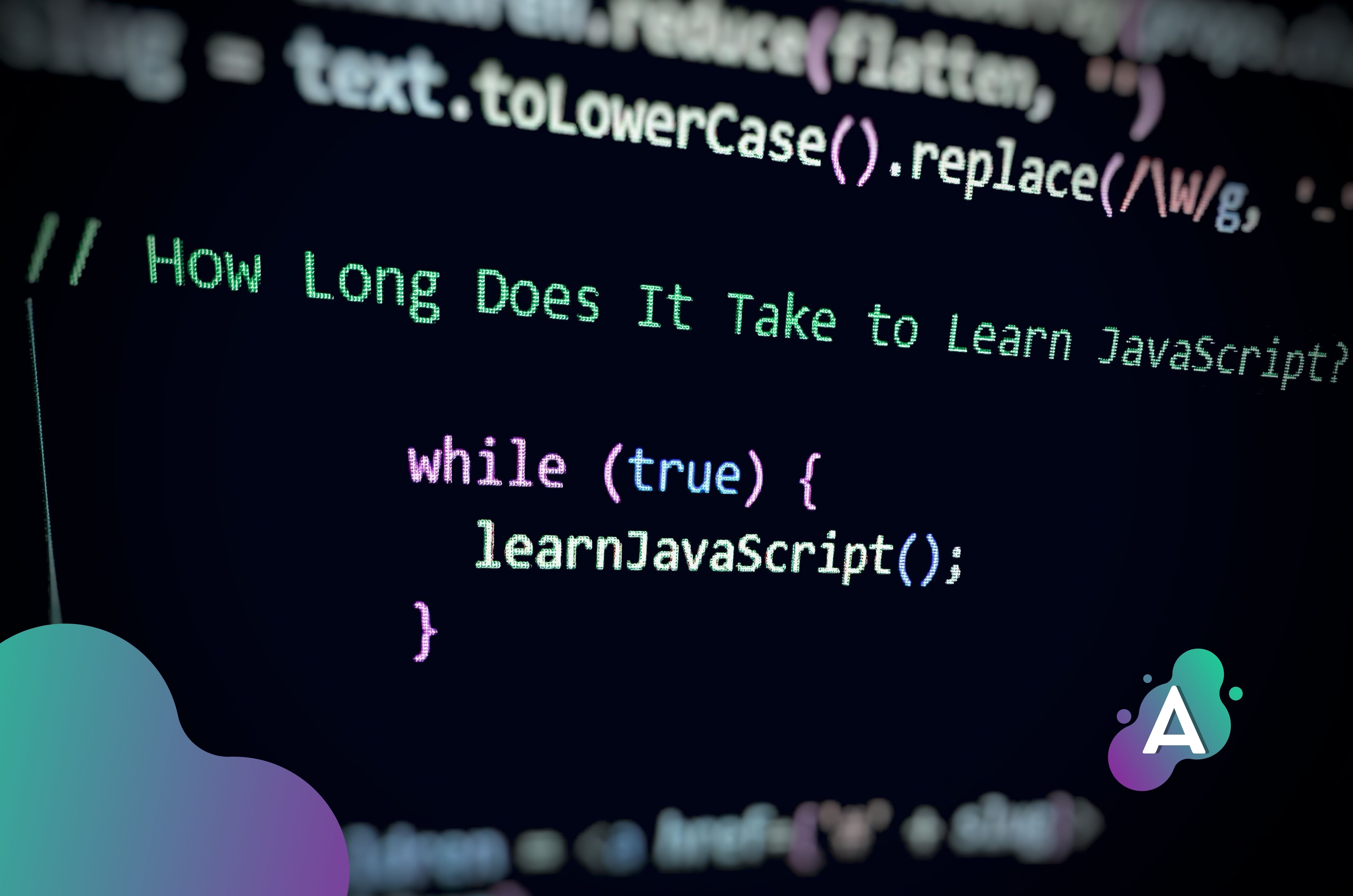Introduction
Learning JavaScript, the versatile and widely-used programming language, is a valuable skill in today's tech-driven world. Whether you're a beginner looking to get into web development or an experienced programmer that wants to expand their skill set, understanding the time commitment required to learn JavaScript is crucial. In this article, we'll explore the factors that influence the learning process and provide practical insights into how long it takes to become proficient in JavaScript.
How Long Does It Take to Learn JavaScript?
The time to learn JavaScript varies, but gaining proficiency in basics may take around 6-9 months. Mastery, including advanced concepts and frameworks, could extend to 12-16 months or more, depending on individual factors and learning intensity.To achieve these timelines you need to be dedicated and practice daily. Programming is hard and if you don't see immediate results, don't worry, try to understand how basic algorithms work, learn the core concepts of programming, or ask a friend for help if you are stuck. If you don't like the process or think that JavaScript or programming is not for you, it might be better to focus your attention on something you feel more comfortable in, because learning something you don't like will hardly get you anywhere. From experience, I can say that just because you started learning JavaScript, it doesn't mean you have to keep doing it at any cost. Having said that, I don't want to discourage anyone, just want to set realistic expectations for what you are going to be dealing with.
If you are a beginner or an itermedate developer take a look at 10 Web Developer Project Ideas for Beginners.
Common Learning Path of a JS Developer
Foundations of JavaScript
To grasp the fundamentals of JavaScript, beginners typically spend 2-3 months on dedicated study and practice. This stage involves understanding variables, data types, loops, and conditionals. Online coding platforms, interactive tutorials, and coding exercises are excellent resources for building a strong foundation. If you are starting as a self-thought developer I'd recommend starting with YouTube videos or Udemy courses. It will be very helpful if you can find someone who knows JavaScript and helps you when you feel stuck or have a question. The ability to search in Google is also essential for a Beginner Web Developer. You can experiment with AI Models like ChatGPT or Google Bard, but use them only for explanation of things you don't understand. Don't ask them to write the code for you.
DOM Manipulation and Front-End Development
The Document Object Model (DOM) is a critical aspect of the Front-End web development with JavaScript. Learning to manipulate the DOM, handle events, and create interactive web pages usually takes an additional 2-3 months. During this phase, aspiring developers delve into projects, gaining hands-on experience to reinforce their knowledge. I call this the interactive phase because you finally start seeing dynamic changes in the web page, rather than just using the console.
Promises, Asynchronous JavaScript and AJAX
Asynchronous programming is a key concept in JavaScript, and understanding it is essential for creating dynamic web applications. Devoting 2-3 months to mastering asynchronous JavaScript and AJAX (Asynchronous JavaScript and XML) is needed, as developers learn to work with APIs and handle data asynchronously. Understanding how promises work might be one of the hardest things in JavaScript, but with enough exercise and trial and failure, you will eventually get them.
Frameworks and Libraries
Embracing JavaScript frameworks and libraries, such as React, Angular, or Vue.js, is the next step. Learning a framework can take 2-4 months, depending on the complexity and the individual's prior experience. These tools enhance efficiency by providing pre-built components and efficient state management. Learning a framework will make you think in a different way than the standard DOM manipulation, but once you get used to it, you will love it and will never want to go back to vanilla JavaScript. If you are interested in frameworks, you will love the article How I created my own blog using NextJS and why? (don't fall for my mistakes).
Server-Side Development
For a more comprehensive skill set, understanding server-side JavaScript with Node.js is recommended. This step can take an additional 2-3 months, enabling developers to build full-stack applications and work seamlessly across the client and server sides. Due to the dynamic nature of programming, if you want to stay relevant, you should learn a lot of different technologies. Being capable of writing full-stack applications will pay you off big time when you start looking for a job.
Continuous Learning and Real-world Projects
Everything that we mentioned is important but the real mastery comes with practical application. Engaging in real-world projects, collaborating with other developers, and staying updated on industry trends are ongoing processes. Many professionals consider themselves continually learning, as JavaScript evolves and new technologies emerge. Being interested in the newest technologies and following JavaScript communities will help you stay up to date with the latest trends.
Conclusion
Did we manage to answer the question How Long Does It Take to Learn JavaScript?. If you came here for the short answer - Prepare yourself for at least a year full of intensive study and be patient because practice makes perfect.
